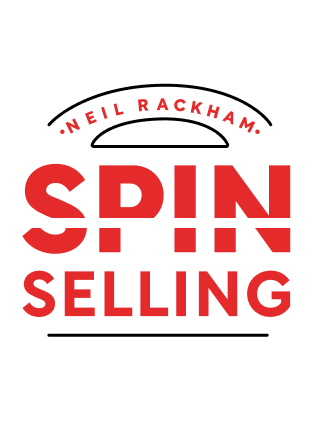

This article is an excerpt from the Shortform summary of "Spin Selling" by Neil Rackham. Shortform has the world's best summaries of books you should be reading.
Like this article? Sign up for a free trial here .
What are common sales objections, and how should you handle them? How can the SPIN selling method help?
Common sales objections can stem from issues with the product or with the sale. SPIN selling offers examples of common sales objections, and how to overcome them with customers.
Common Sales Objections
Typical sales training in handling customer objections contends that reps should welcome objections as a sign of customer interest, and the more objections a rep gets, the more successful she’ll be. Hence, most sales training focuses on teaching reps techniques for handling customer objections. (This sales training focus is second only to teaching closing techniques.)
But research on common sales objections tells a different story. It shows that:
- Objection handling isn’t as important as trainers contend.
- Objections are prompted by the seller’s actions more often than they’re raised independently by the customer.
- Inexperienced sales reps get more objections than experienced reps.
- Experienced reps prevent objections rather than handling them.
Using features, advantages, or benefits prompt different customer responses. Here’s a summary of the typical customer responses:
| Seller’s focus | Seller’s statement | Customer response |
| 1) Features | Describes facts | Raises concerns about price |
| 2) Advantages | Shows how features can help the customer | Raises objections |
| 3) Benefits | Shows how the solution meets the customer’s explicit needs | Supports or approves seller statements |
1) Customer Response to Features
When the salesperson presents a lot of product features, customers often respond with concerns or common sales objections to the price. In other words, emphasizing features increases price sensitivity.
This works if you’re selling a cheap product with a lot of features like a $10 watch. In fact, features have long been used to sell inexpensive merchandise because of their link to price sensitivity. The way it works is that when you list a lot of “amazing” features, the customer expects a high price and is pleasantly surprised and more inclined to buy when the price turns out to be low.
However, with high-end products, the price sensitivity created by listing features makes people less likely to buy; seeing the features makes them question whether it’s worth the price. That’s why an ad for a cheap watch lists dozens of features, while an ad for an expensive one omits features and instead creates an impression of style.
When you’re presenting a lot of product features but the product isn’t selling, you don’t need training in handling customer objections—you need to stop emphasizing so many features.
2) Customer Response to Advantages
As previously noted, citing advantages—or showing how product features can help the customer—has a positive effect on small sales, but the effect diminishes as sales grow larger. The fact that advantages often generate common sales objections may partly explain this.
It’s a matter of putting the cart before the horse. Research indicates that emphasizing advantages at the wrong time triggers customer objections.
Here’s how the sequence goes: the sales rep asks a problem question, the customer responds with an implied need, the seller cites an advantage—and the customer objects to the cost. From the customer’s perspective, his problem is minor compared to the seller’s proposed solution.
That’s because the sales rep tried to show how her product’s features could help without first magnifying the customer’s implied need. The customer, using the value equation, didn’t feel his problem was worth the cost of the solution, and therefore he objected to the price. Had the sales rep first built up the value of solving the problem, she’d have prevented the objection.
By contrast, in small sales, where the cost of meeting an implied need is low, the seller doesn’t need to build up the need, or value of the problem, to get a sale.
The answer to common sales objections in large sales isn’t learning techniques to handle them. It’s using SPIN questions to build up the problem, and thus the value of solving it with your solution. When the size of the problem aligns with the cost of the solution, objections are less likely to come up.
Objections can never be eliminated entirely. Customers may have needs your product can’t meet or a competitor may offer a better product. No technique from a training class will prevent objections stemming from these issues.
The key is to avoid triggering unnecessary common sales objections because research indicates that the higher the percentage of objections in the customer’s response, the less likely your call will succeed.
3) Customer Response to Benefits
Research indicates that the more benefits sellers present—that is, the more they demonstrate how the solution addresses the customer’s explicit need—the more positively customers respond. This isn’t especially surprising. The customer has expressed an explicit need or want. When you show how your product can give him what he wants (present a benefit), he’s naturally going to be happy.
Developing needs and value before you offer the benefits of your product forestalls objections, but even better, it inclines the customer to support or approve of your solution.
Here’s the sequence: The sales rep develops the customer’s need with implication and payoff questions, the customer states an explicit need, the rep responds with benefits—and the customer reacts with agreement or approval.
By improving your probing skills, you can prevent more objections, which will help you sell more successfully.
What to Do if You Get a Lot of Common Sales Objections
If you’re receiving more objections than you’d like, first determine whether they’re unavoidable (the customer has needs you can’t meet) or avoidable objections.
Most likely, they’re the avoidable kind, which means they can be addressed. Here are two indicators that you’re getting avoidable common sales objections that can be prevented by improving your questioning skills:
1) You get objections early in the sales call. This means that instead of asking questions as you should be, you’re probably jumping the gun by offering solutions and advantages. You need to ask enough implication and need-payoff questions to develop strong needs before you bring up solutions.
2) You get objections regarding value. If the customer is raising doubts about the value of your solution, you haven’t developed the problem or need enough to justify the solution. In this situation, the customer might say things like: “It’s too expensive,” “I don’t think a new system is worth the trouble,” or “We’re happy with the equipment we have.” You need to talk less about features, and focus on asking probing questions.
Common sales objections can feel like an unbeatable obstacle. But with the SPIN selling method, these common sales objections can become opportunities to make the sale happen.

———End of Preview———
Like what you just read? Read the rest of the world's best summary of Neil Rackham's "Spin Selling" at Shortform .
Here's what you'll find in our full Spin Selling summary :
- What the SPIN in SPIN Selling stands for
- How to demonstrate real value to the person you're selling to
- How to get commitment from your customer to close the sale fast






